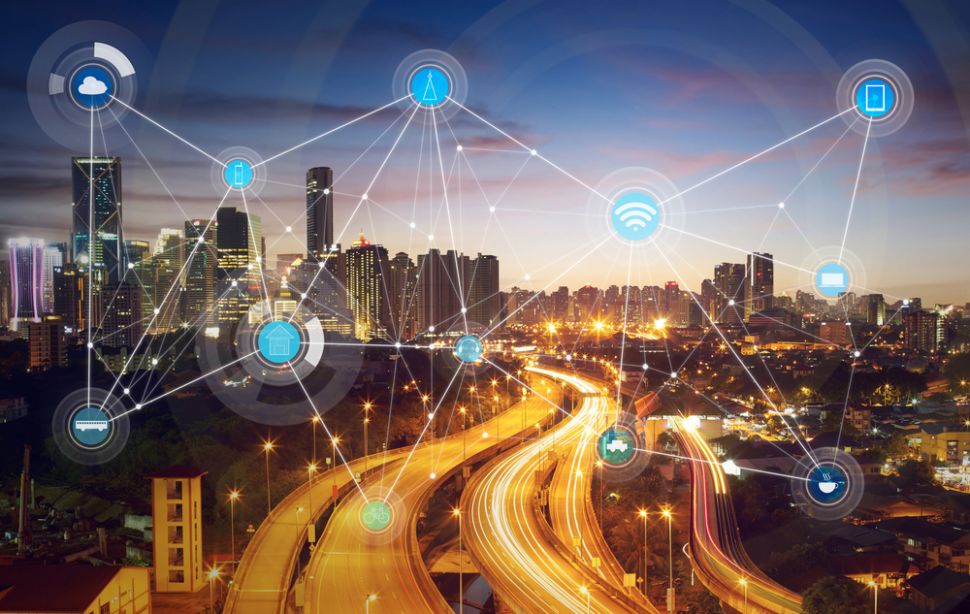Cities post-covid will become more sustainable
The smart building revolution

The pandemic may be far from over, but life is slowly returning to normal. That means that the problems that we have been somewhat distracted from for the last 18 months are now back at the top of the agenda – and none is anything near as urgent as climate change.
Luis D’Acosta is EVP of Digital Energy at Schneider Electric.
It can be difficult to know how to chip away at such a monumental challenge. But when you look at the amounts of energy we unthinkingly waste every day, there are enormous opportunities to reduce greenhouse gas emissions, not least in the built environment.
The technology to reduce building emissions is there, and so is the will. So how do we make our cities greener and our buildings more energy efficient, and in a way that’s also affordable? It all starts with getting smart.
Are buildings that bad?
It’s easy to pin all the blame for greenhouse gas emissions on the most visible manifestations like cars and airplanes. In fact, if we count construction, buildings are responsible for around 40% of all the CO2 we emit. What’s more, 30% of the energy used in buildings is wasted. Just consider the last time you walked around a city at night and saw office blocks lit up without a worker in sight.
But surely we are tackling the problem? Perhaps, but not nearly enough. Today, 82% of the potential means to reduce energy waste in buildings remains untapped. Clearly, cities are missing a major opportunity to make a meaningful difference to their energy usage and emissions. With no time left to waste as we must halve our CO2 emissions by 2030, we must seize the chance to make our buildings more energy efficient.
The smart building revolution
Today it seems smart technology is everywhere, so why not in buildings? We’re all familiar with smart meters at home, but for larger buildings – including offices – there is a huge range of cutting-edge technologies that can optimize energy efficiency.
These range from Internet of Things (IoT) applications and smart devices to predictive analytics that intelligently forecast how building systems will perform across their lifetime; everything from next-generation power systems that monitor energy usage, to smart lighting and intelligent Building Management Systems (BMS) – the “brain” that connects every system and device together holistically.
Sign up to the TechRadar Pro newsletter to get all the top news, opinion, features and guidance your business needs to succeed!
These technologies are the infrastructure of the smart building revolution, but it requires more than connected devices to effect real and lasting change. Managing the data produced by IoT-enabled technology is just as important.
Joining the dots
If it were just a matter of installing smart systems, the battle for greener, more efficient buildings would already have been won. But there’s an additional challenge where buildings and their operators are failing short – using the data obtained from these systems effectively.
Too often, facilities managers don’t know how best to leverage the data. This creates inefficiencies, while presenting potential safety and reliability concerns. Building operators need to ‘join the dots’ to understand, in real time, all the factors that affect energy usage. To take just one example, real-time data analytics connected to heating, ventilation, and air conditioning (HVAC) systems can help to determine how and where energy is being used and wasted, empowering building owners and operators to better optimize the building's performance depending on how many people are on premises, and how cold or hot it may be outside.
Short-term payback, long-term positive action
Smart building solutions save both money and energy, helping avoid a considerable amount of carbon emissions every year. One of Schneider Electric’s customers, JLL, has achieved a 30% reduction in energy usage since deploying technology that helps them visualize and control their energy usage.
JLL is just one of the businesses contributing to the 276 million tons of carbon Schneider Electric has helped eliminate. And that’s not to mention similar efforts from other vendors. And if it sounds prohibitively expensive, consider this: the average payback on digital retrofits is just 1-3 years, while building operators typically see a 30% reduction in energy usage, and similar reductions in operational costs.
The business and environmental cases couldn’t be clearer. Now it’s up to the world’s cities and their governments to help organizations make the leap into a more energy-efficient future.
The role of government
If we’re to see net-zero buildings become standard, we need the public and private sectors to work together, fighting climate change. Public initiatives like Biden’s announcement of new federal investments for greener buildings and accompanying net-zero targets, or the US Green Building Council’s LEED certification will play an important role in delivering the next generation of energy-efficient buildings.
Standards are crucial, but so is education – and leading by example. Local authorities must adopt best practices throughout their own property portfolio, even developing smart city solutions of their own, and help educate the local business community about the environmental and financial benefits of controlling their energy usage. Local and national government must not only set clear goals for the private sector, but also educate businesses on how technology can help speed them on their way to net-zero.
Building a greener future
As we emerge into a post-pandemic future, the challenge of climate change looms large. Yet the future of fully energy-efficient buildings, which will have such a major effect on overall emissions, is tantalizingly within reach. All we need to do to grasp it is harness the technologies that are already making a difference for future-thinking businesses around the world.
- We feature the best eco-friendly travel apps.
Luis D’Acosta is EVP of Digital Energy at Schneider Electric.